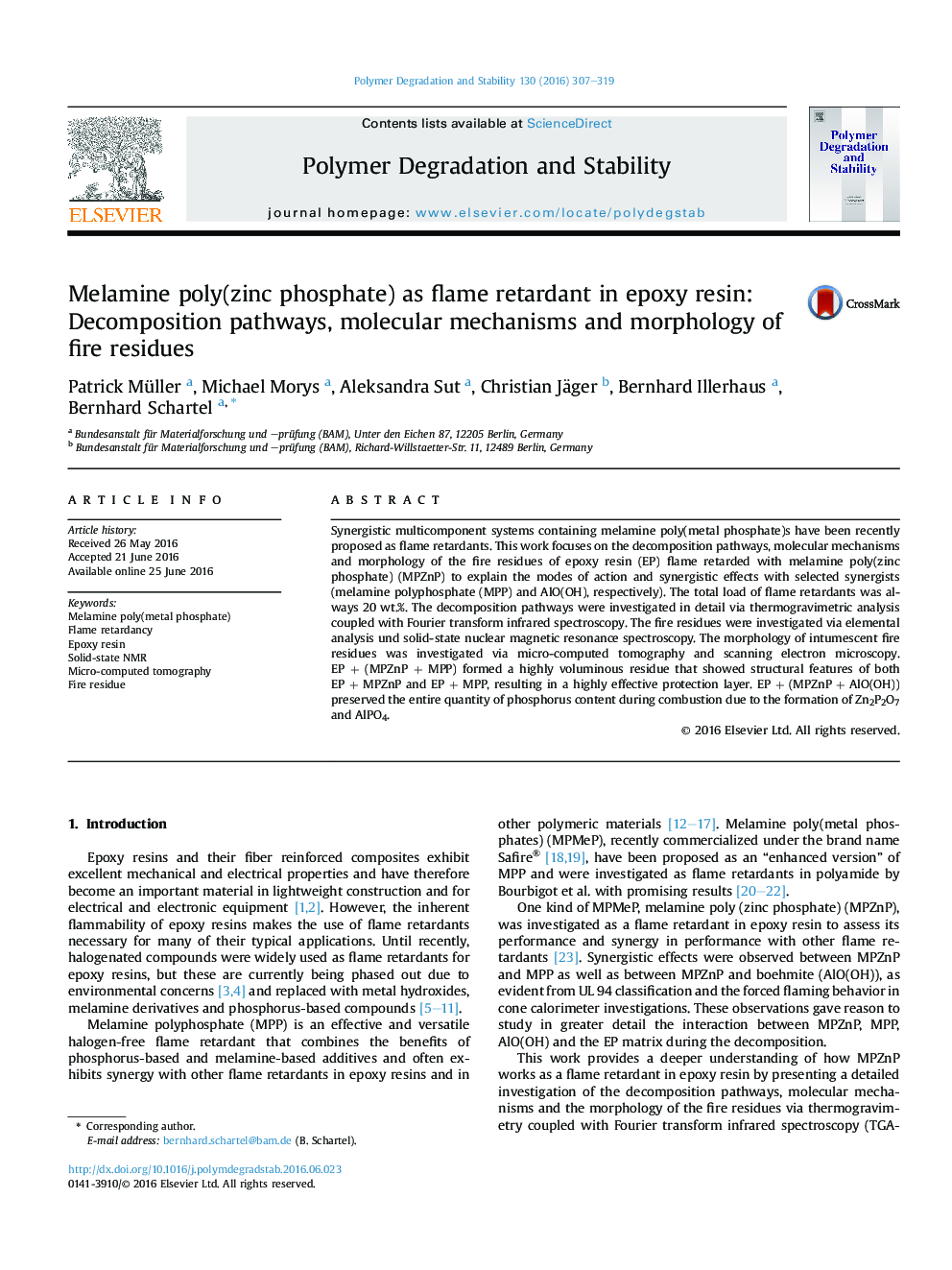| Article ID | Journal | Published Year | Pages | File Type |
|---|---|---|---|---|
| 5201088 | Polymer Degradation and Stability | 2016 | 13 Pages |
Abstract
Synergistic multicomponent systems containing melamine poly(metal phosphate)s have been recently proposed as flame retardants. This work focuses on the decomposition pathways, molecular mechanisms and morphology of the fire residues of epoxy resin (EP) flame retarded with melamine poly(zinc phosphate) (MPZnP) to explain the modes of action and synergistic effects with selected synergists (melamine polyphosphate (MPP) and AlO(OH), respectively). The total load of flame retardants was always 20Â wt.%. The decomposition pathways were investigated in detail via thermogravimetric analysis coupled with Fourier transform infrared spectroscopy. The fire residues were investigated via elemental analysis und solid-state nuclear magnetic resonance spectroscopy. The morphology of intumescent fire residues was investigated via micro-computed tomography and scanning electron microscopy. EPÂ +Â (MPZnPÂ +Â MPP) formed a highly voluminous residue that showed structural features of both EPÂ +Â MPZnP and EPÂ +Â MPP, resulting in a highly effective protection layer. EPÂ +Â (MPZnPÂ +Â AlO(OH)) preserved the entire quantity of phosphorus content during combustion due to the formation of Zn2P2O7 and AlPO4.
Related Topics
Physical Sciences and Engineering
Chemistry
Organic Chemistry
Authors
Patrick Müller, Michael Morys, Aleksandra Sut, Christian Jäger, Bernhard Illerhaus, Bernhard Schartel,
